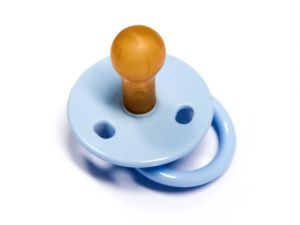Josh was his parents’ third child, born after two girls. His dad, Ed, a former college track standout, spent a lot of time on physical activities with all the kids. Ed was troubled by a call from Josh’s seventh-grade physical education teacher. The teacher said Josh acted reluctant to participate in class and wondered if it was due to any physical problems. Eventually, doctors diagnosed the youngster as suffering from Poland anomaly.
Overview of Poland Anomaly
The National Human Genome Research Institute (NHGRI) reports that this condition is the underdevelopment or the absence of the pectoralis – the chest muscle on one side of a body and cutaneous syndactyly – webbing of the fingers – on the same side. Named after the 19th-century anatomist Sir Alfred Poland, it’s also known as Poland syndrome.
Researchers don’t know why this disorder can affect either side of a patient’s body but is twice as likely to target the right half. Boys are more likely to develop it than girls are. Some mild cases like Josh’s aren’t obvious until puberty, when lopsided development of breast tissue and chest muscle mass development becomes pronounced, according to MedicineNet.
Causes
The incidence of Poland anomaly is difficult to calculate. Estimates suggest it occurs between 1 in 10,000 to 1 in 100,000 births. The exact causes remain unknown. However, health care experts believe that something occurs during the sixth week of fetal development that leads to the disorder.
Speculation centers on an interruption of the arterial blood supply to the embryo in the area under the collarbone and a malformation of the subclavian arteries restricting the amount of blood that reaches one side of the body.
MedicineNet reports that patients very rarely inherit Poland anomaly. If genetic transmission of the disorder occurs, researchers have not uncovered the mode.
Symptoms
While the severity of the disorder varies considerably, most Poland anomaly patients have some symptoms in common. Aplasia – absence of some of the chest muscles – is obvious. Patients are usually missing the end of the main chest muscle at the point where it should attach to the breastbone.
In many patients, the nipple and the darker area surrounding it – the areola – are either missing or underdeveloped. For female patients, the deformity might include the breast and underlying tissues.
Fingers that are abnormally short and webbed are signs of Poland anomaly. Many patients lack armpit hair. The skin covering the affected area of the body is underdeveloped, with a thinned or missing layer of fat underneath it.
In rare cases, the rib case on the affected half of the body might be missing or underdeveloped. Another unusual sign is the abnormal development of the bones in the forearm or the shoulder blade. Spine and kidney malformations sometimes occur.
Diagnosis and Treatment
When a deformity is obvious at birth, doctors are able to make a quick diagnosis. For older patients, they utilize specialized imaging such as CT scans and MRI studies.
The primary treatment for Poland anomaly is reconstructive surgery. Surgeons utilize chest muscle tissue or transplanted muscle from another area of the body to create a symmetrical appearance of both sides of the body. Implanting bioengineered cartilage improves the appearance when the ribs in the chest wall are missing or underdeveloped. To create the appearance of a nipple and an areola, therapeutic tattooing is useful.
Males who are at least 13 are candidates for surgery. However, doctors usually recommend waiting for females until breast development on the unaffected side of the body is finished.
Sources:
The National Human Genome Research Institute (NHGRI) site
MedicineNet site
Reference:
- The National Human Genome Research Institute (NHGRI) site
- MedicineNet site



